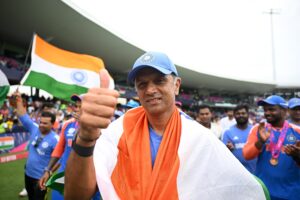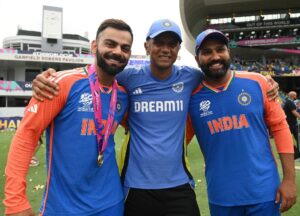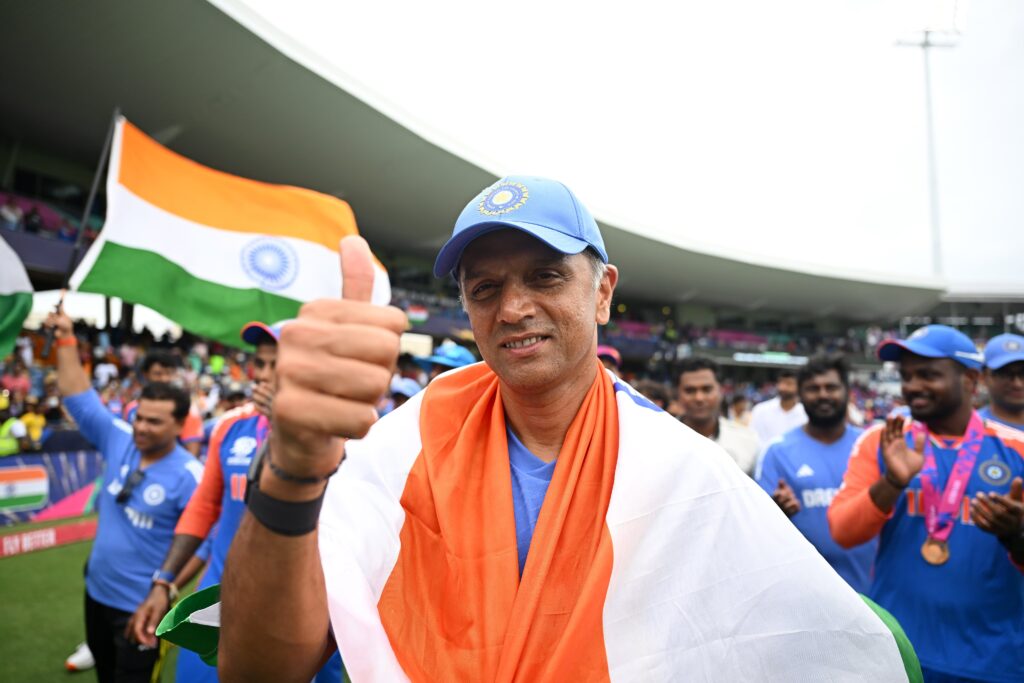
“I am not a legacy person,” Rahul Dravid said to the media at Kensington Oval in Bridgetown, Barbados, soon after India had won the T20 World Cup. “I am not looking for legacies. I am just glad that we gave it the best we could.”
The person who also said in a lighter vein that he would be “without a job from next week” does leave behind a legacy. What Dravid did after having retired as an active cricketer isn’t restricted just to the senior India team. He had looked after the India A and under-19 teams as the Director of the National Cricket Academy (NCA) before being appointed chief coach of India, and had streamlined the process.
What Dravid leaves behind is a system of continuity. He insisted from his first day in office that there should be synchronisation in running the India A and India teams. He made sure that the A team was picked on the basis of the requirements of the senior team. For example, if the senior team requires a player of capability ‘X’, the A team should groom a player who fits that bill so that the player realises what his role is when he eventually makes it to the senior team. He ensured that there is a supply line, and that’s why India have the best bench strength in the world.
This was no easy task. Dravid had to see players right from the junior level and then understand what they were capable of and how they could contribute to the bigger cause. This took careful studying of every aspect, from technique to temperament and everything in between. He didn’t look for instant results, but focussed on upbringing. Once a player went through that process, he became better suited for the bigger challenges. This was an invaluable and unquantifiable contribution.
For the Latest Sports News: Click Here

Effectively, this makes the task of Dravid’s successor easier. There are no obvious loopholes in the system which might lead to a crisis. Things are following certain norms. If followed, this will yield results more often than not. No World Cup win is guaranteed, but it’s certain that the Indian teams will always stand a strong chance. During Dravid’s tenure, the only triumph came in his last event as the chief coach. Before that, there were ample signs that the team was getting there.
In certain ways, Dravid’s methods and the thought processes were similar to what Anil Kumble wanted to put in place when he was the chief coach. Like his statemate from Karnataka, Dravid emphasised on giving players a fair run once they were selected. The logic was clear. When someone has been picked on merit, failure in one or two matches doesn’t accrue demerit points. An example: Rajat Patidar getting three Tests against England despite being unable to fulfil his duties as a middle-order batter. He was not discarded straightaway because that would have proven the process wrong.
This clarity of thought and belief stood India in good stead. In the 50 and 20-over World Cups, India played 20 matches, and won 18, while one was abandoned due to rain. No team comes even close to this record. It didn’t happen overnight. It happened because each player had their roles clearly defined and there were like-for-like replacements always in place, according to requirements. Five players making their Test debut in the series against England, won 4-1 by India, was testament of that.
Speaking on SkySports, former England captain Nasser Hussain said that a team is basically an extension of its captain and coach. As the chief coach, Dravid inculcated a culture which was not there before he took over. It helped that he started with the junior and A teams. What he did after that was to connect these stages with a common thread. The next man in the hot seat will find it a lot easier because of this Dravid legacy. No matter how much he wants to deny that.
Also Read: Alcaraz and Sinner crank it up on Day 1 at Wimbledon




